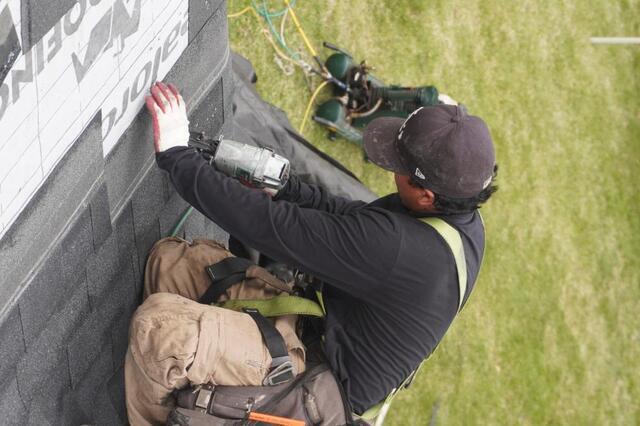Ring-Shank Nails (and Why They Beat Conventional Nails)
When wind howls off Long Island Sound, snow loads stack up, and summer heat makes roofs flex, fastening strength matters. That’s why Brown Roofing builds every roof with ring-shank nails—not smooth, “conventional” nails. It’s a small detail with a big impact on lifespan, warranty performance, and homeowner peace of mind. “We treat fasteners like structural components, not an afterthought. Ring-shank nails are non-negotiable on a Brown roof.” — Eddie Griffin, Owner
What Are Ring-Shank Nails? Ring-shank nails have small, raised ridges (rings) along the shank. Those rings grip the wood fibers in your roof deck, dramatically increasing withdrawal resistance (how hard it is for a nail to back out) compared with smooth-shank nails.
The Advantages Over Conventional (Smooth-Shank) Nails
1) Superior Holding Power The rings lock into the deck so shingles stay put through wind uplift, thermal expansion and contraction, and roof movement over time.
2) Fewer Nail Pops & Leaks Smooth nails can slowly work loose, telegraphing “nail pops” that break the shingle seal and invite leaks. Ring-shank nails resist backing out, helping maintain a watertight system.
3) Better Storm Performance Wind events and nor’easters target the edges and high-pressure zones of a roof. Stronger fastener grip helps shingles remain sealed and flat, reducing the chance of blow-offs.
4) Longer-Lasting Aesthetics A secure shingle lays flatter, seals better, and stays that way—protecting curb appeal and manufacturer warranty coverage.
5) Stronger Decking Connection When we re-secure existing roof decking, ring-shank nails bite into the sheathing and minimize seasonal loosening. A tighter deck means a quieter, sturdier roof system overall.
6) Built-In Quality Control Ring-shank nails pair perfectly with modern nailing zones (like reinforced nailing strips on premium shingles). The rings help “lock” the nail in the sweet spot for reliable, repeatable installs.
How Brown Roofing Installs Them (The Brown Way)
- Corrosion-resistant fasteners: We use code-approved, galvanized ring-shank nails sized to penetrate the deck per manufacturer and building-code requirements.
- Re-secure the deck: Before shingles go on, we re-nail loose or under-fastened sheathing with ring-shanks so your roof has a solid foundation. Precise nailing patterns: We follow (and often exceed) manufacturer nailing patterns and local code for storm-ready performance.
- System thinking: Fasteners are matched to the shingle, underlayment, and ventilation plan so all components work as one.
“Connecticut’s freeze-thaw cycles and coastal winds expose any weak link. Spending a few extra dollars on ring-shank nails protects a roof that costs thousands—it’s the best value play there is.” — Eddie Griffin
Homeowner Checklist
- Ask what nails your roofer uses. If the answer isn’t ring-shank, galvanized, code-approved, consider that a red flag.
- Confirm deck back-nailing. Re-securing sheathing before shingles go on is a big quality upgrade.
- Verify nail placement. Nails should land in the designated nailing zone, not high or low.
- Get it in writing. Make fastener type and nailing pattern part of your proposal and warranty documentation.
The Bottom Line
Smooth nails are “good enough” for a quick install—but ring-shank nails build a roof to last. Stronger grip, fewer callbacks, better storm resilience, and a cleaner finish: that’s why Brown Roofing specifies ring-shank on every job.
Ready for a roof that’s fastened for the long haul? Contact Brown Roofing—because Brown won’t let you down.



.png)
